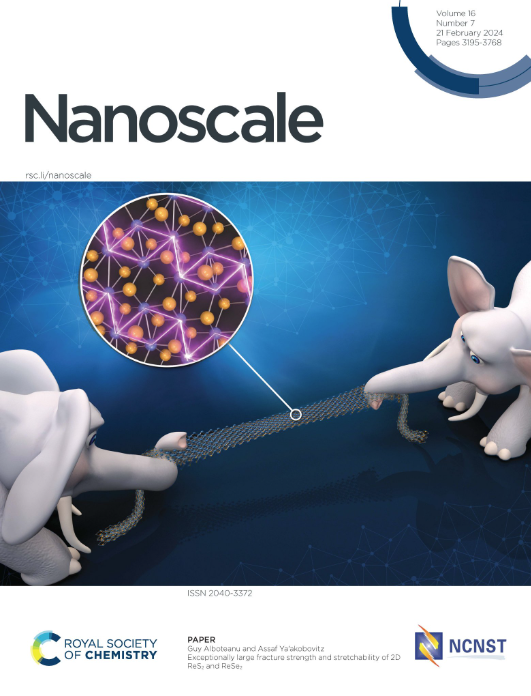量子点发光二极管空穴注入层的优化。
IF 5.8
3区 材料科学
Q1 CHEMISTRY, MULTIDISCIPLINARY
引用次数: 0
摘要
量子点发光二极管(qled)因其宽光谱可调性、高色纯度和卓越的效率而被认为是下一代显示技术的基石。然而,量子点(QDs)的深价带能级导致高空穴注入势垒,导致电荷注入不平衡,限制了器件的性能。本文系统总结了qled中空穴注入层(HIL)的优化策略,重点介绍了有机单层空穴注入层(如PEDOT: PSS)、无机单层空穴注入层(如MoO3、NiOx和V2O5)、双结构空穴注入层(如PEDOT: PSS/金属氧化物)和掺杂空穴注入层(如金属离子掺杂和有机无机杂化)的设计和应用。研究表明,双HILs通过阶梯式能级降低了空穴注入势垒,掺杂策略增强了载流子迁移率和界面稳定性,金属氧化物HILs表现出优异的热稳定性和环境适应性。此外,后处理工艺如快速热退火(RTA)可以进一步优化界面性能。尽管qled在显示和照明应用方面具有巨大的潜力,但在解决无镉蓝色qled的效率不足和柔性器件中的界面应变不匹配方面仍然存在挑战。本文综述为高效、稳定、可扩展的qled的合理设计提供了全面的参考,并概述了未来发展方向。本文章由计算机程序翻译,如有差异,请以英文原文为准。
Optimization of the hole-injection layer for quantum dot light-emitting diodes.
Quantum dot light-emitting diodes (QLEDs) are regarded as cornerstones of next-generation display technologies owing to their broad spectral tunability, high color purity, and exceptional efficiency. However, the deep valence band energy levels of quantum dots (QDs) result in a high hole-injection barrier, leading to a charge-injection imbalance and limiting the device performance. This review systematically summarizes the optimization strategies for the hole-injection layer (HIL) in QLEDs, focusing on the design and application of organic single-layer HILs (e.g., PEDOT : PSS), inorganic single-layer HILs (e.g., MoO3, NiOx, and V2O5), dual HIL structures (e.g., PEDOT : PSS/metal oxide), and doped HILs (e.g., metal-ion doping and organic-inorganic hybridization). Studies have demonstrated that dual HILs reduce the hole-injection barrier through stepped energy levels, doping strategies enhance the carrier mobility and interfacial stability, and metal oxide HILs exhibit superior thermal stability and environmental adaptability. Additionally, post-treatment processes such as rapid thermal annealing (RTA) can further optimize the interfacial properties. Although QLEDs possess immense potential in display and lighting applications, challenges remain in addressing the insufficient efficiency of cadmium-free blue QLEDs and the interfacial strain mismatch in flexible devices. This review provides a comprehensive reference for the rational design of HILs and outlines future directions for developing high-efficiency, stable, and scalable QLEDs.
求助全文
通过发布文献求助,成功后即可免费获取论文全文。
去求助
来源期刊

Nanoscale
CHEMISTRY, MULTIDISCIPLINARY-NANOSCIENCE & NANOTECHNOLOGY
CiteScore
12.10
自引率
3.00%
发文量
1628
审稿时长
1.6 months
期刊介绍:
Nanoscale is a high-impact international journal, publishing high-quality research across nanoscience and nanotechnology. Nanoscale publishes a full mix of research articles on experimental and theoretical work, including reviews, communications, and full papers.Highly interdisciplinary, this journal appeals to scientists, researchers and professionals interested in nanoscience and nanotechnology, quantum materials and quantum technology, including the areas of physics, chemistry, biology, medicine, materials, energy/environment, information technology, detection science, healthcare and drug discovery, and electronics.
 求助内容:
求助内容: 应助结果提醒方式:
应助结果提醒方式:


